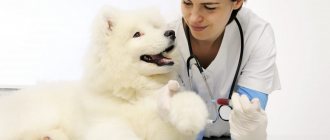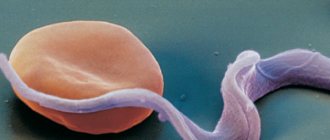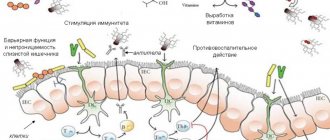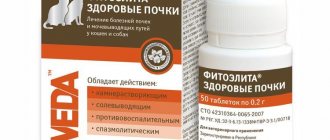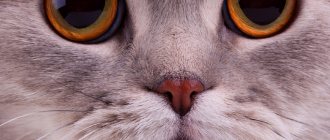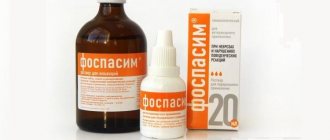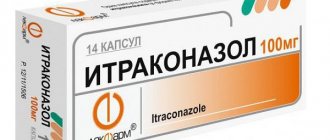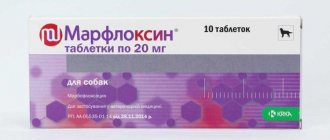Symptoms of hyperparathyroidism
A kitten aged from several weeks to several months suddenly develops a feeling of discomfort and pain. He begins to play sluggishly and reluctantly, preferring to just sit or lie down. Sometimes the kitten hisses or even bites, not allowing itself to be touched.
The most striking sign of the disease, lameness, occurs as a result of musculoskeletal pain. The kitten's bones become soft and bendable. With excessive activity, which is typical for kittens, this leads to multiple fractures (like a “willow branch”) and microfractures.
Moreover, not only the bones of the limbs bend, but also the vertebrae. The result is neurological disorders, such as paresis and paralysis of the limbs, incontinence or, conversely, retention of urine and stool.
Weakness of the bones often leads to curvature of the paws, deformation of the chest and pelvic bones is possible, as well as impaired growth and replacement of teeth.
Signs of illness
Although hyperparathyroidism can develop at any age, it most often affects young kittens. In the early stages, the disease is almost never diagnosed, but over time, owners increasingly notice that the animal moves more slowly, is lazy to play and run, and prefers lying on one side. Feeling severe discomfort and weakness, the animal may become a little aggressive, for example, hissing or biting the person who touches it.
The bone tissue in the kitten's skeleton gradually begins to erode, and in places it is replaced by fibrous tissue. Consequently, the bones themselves become soft and empty. The kitten is increasingly injured, fractures and microcracks appear. Walking becomes more difficult, and the owner notices that the animal moves very little.
Lameness is one of the main symptoms of hyperparathyroidism. Other symptoms of the disease that a pet owner or veterinarian may notice include:
- change in the normal shape of the chest;
- deformation changes in the pelvic part of the skeleton;
- apathy;
- aggression when the owner tries to play or pet him;
- impaired tooth growth, in more complex cases they begin to fall out;
- constant drowsiness of the animal;
- abdominal bloating;
- retention of urination and bowel movements;
- in later stages - partial or complete paralysis of the hind limbs.
Why do the bones of cats and cats weaken?!
This is due to an increase in hormones produced by the parathyroid glands - hyperthyroidism. And this is due to a lack of calcium and excess phosphorus in the diet. And this is due to an incorrect, unbalanced diet(!) . Now we get to the core of the problem. Now more details.
Normally, the content of calcium and phosphorus in a kitten’s diet should be approximately equal (Ca:P = 1:1). With unbalanced feeding of kittens, the diet often contains a lot of phosphorus and little calcium. Excess phosphorus interferes with the absorption of even this small amount of calcium from the intestines. This metabolic disorder leads to temporary hypocalcemia - a decrease in calcium levels in the blood serum.
To maintain normal levels of calcium in the blood, the parathyroid gland secretes a hormone that “takes” calcium from the bones and releases it into the circulatory system. If this happens for a long time, the skeleton is greatly weakened.
At the same time, bones grow poorly, since the formation of new bone tissue occurs simultaneously with its “erosion.” The “resorbable” areas of the bones are partially replaced by fibrous tissue, which makes them fragile.
Nutritional hyperparathyroidism in dogs and cats
Everyone has heard about the possible development of rickets in kittens and puppies. It occurs when there is a deficiency of vitamins D. But in practice, this disease is quite rare, even in laboratory conditions. It is often confused with another - nutritional hyperparathyroidism.
What is nutritional hyperparathyroidism
Alimentary hyperparathyroidism (secondary/nutritional hyperparathyroidism, juvenile osteodystrophy) is an endocrine pathology in which, in response to a shift in the ratio of calcium to phosphorus in the blood (when there is little calcium and excess phosphorus), the parathyroid glands produce parathyroid hormone, which signals a problem and gives instructions compensate for calcium in the blood by delivering it from bone tissue, sacrificing bones for the benefit of the body. The long hollow bones of the extremities are the first to suffer, and bones with a dense spongy structure, such as the vertebrae, are less affected, but in severe cases they are also damaged. Most often, nutritional hyperparathyroidism occurs in animals on an incorrect, unbalanced high-protein diet when eating exclusively meat, offal or baby meat purees, and a diet poor in calcium and rich in phosphorus (porridge, bread, fish). This is where the error lies, which has serious consequences.
Symptoms of the disease
The disease does not develop immediately and is chronic. Some people have enough resources for a month of asymptomatic progression, others for six months, and then symptoms arise:
- Lethargy
- Muscle weakness
- Thirst, polyuria
- Pain when touched, the owner often cannot understand the cause and location of the pain
- Increased vocalization by the animal signals discomfort and pain.
- Neurological manifestations: seizures, paresis, paralysis
- Constipation, bloating, abdominal pain
- Lameness
- Curvature of the bones of the limbs, spine, chest
- Incorrect placement of limbs, plantigrade walking
- Spontaneous bone fractures without objective reasons, for example when jumping from a sofa or in a game
- Impaired growth and change of teeth
- Stunting
Diagnostics
If you notice any of the symptoms in your pet, do not delay visiting the veterinary clinic. The veterinarian will check with the owner about the animal’s diet, conduct an examination and take an x-ray, which can be used to assess the density of the bones; with hyperparathyroidism, they can be curved and almost transparent. If necessary, the doctor will recommend donating blood to determine the level of ionized calcium and a biochemical analysis to determine the quantitative values of calcium and phosphorus to assess their ratio in the bloodstream, but in mild cases, the analysis may show the ratio to be within normal limits.
Treatment and prevention
Treatment is primarily associated with normalizing the diet.
The puppy or kitten is transferred to specialized food for babies, no lower than premium class. If the owner still wants to stay on a natural diet, then he will have to take a responsible approach to creating a menu. The diet should include muscle meat, lean fish, offal, vegetables, fruits, vegetable and animal oils, eggs, dairy products, vitamin and mineral complexes. To make the task of drawing up a feeding plan easier, you can use the services of a veterinary nutritionist. In severe cases of nutritional hyperparathyroidism, stabilization of broken bones and intravenous administration of calcium solutions may be required. The prognosis depends on how severe the damage is to the animal and the level of calcium in the blood.
During treatment, the animal is limited in movement, for example, in an enclosure or cage, so that, having ceased to feel pain, it does not jump, run, or accidentally break anything.
If the disease is detected at an early stage, therapy and diet are started in a timely manner, the owner follows all recommendations for care and feeding, then the body is fully restored in 3-4 weeks; in severe cases, treatment will be at least 3-6 months.
When getting a kitten or puppy, take responsibility for its care and choice of diet. The health of your pet largely depends on you.
Causes:
- Incorrect diet, poor in calcium and/or rich in phosphorus.
! The disease is typical for animals that eat only meat.
Meat is very rich in phosphorus, but contains little calcium. There is also a lot of phosphorus in fish. Most meat diets have a Ca:P ratio of 1:25 or higher. For example, in horse meat the Ca:P ratio is 1:10, in the heart and liver it is 1:50
| Name | Beef | Veal | Mutton |
| Calcium (g/kg) | 0,15 | 0,22 | 0,24 |
| Phosphorus (g/kg) | 12,10 | 12,00 | 11,45 |
- Breed predisposition. Cats have individual abilities to absorb and retain calcium. The most susceptible to the disease are Siamese, Scottish and British breeds, and Sphynxes.
- Poor absorption of calcium is also promoted by: gastrointestinal diseases, thyroid diseases, kidney failure, increased amounts of vitamins A and D, fluorine, magnesium and phytin in food.
- Growth rate. Fast growing animals are more sensitive to calcium deficiency.
Causes of hypothyroidism in cats
Feline hypothyroidism occurs:
1. Congenital hypothyroidism,
2. Spontaneous acquired hypothyroidism,
3. Iatrogenic hypothyroidism.
Congenital hypothyroidism in cats
Causes disproportionate dwarfism and may occur as a result of thyroid agenesis or dysgenesis or due to dyshormonogenesis. A disturbance in the activity of thyroid peroxidase, leading to impaired organ fixation of iodine, was noted in domestic shorthair cats and Abyssinian cats. With this type of hypothyroidism, the development of goiter can be expected. Additionally, the condition of hypothyroidism, due to the inability of the thyroid gland to respond to thyroid-stimulating hormone (TSH), has been described in the Japanese cat family. These disorders, which cause congenital hypothyroidism, are usually inherited as an autosomal recessive trait.
Rare cases of hypothyroidism due to iodine deficiency have been described in cats fed exclusively meat.
Spontaneous acquired hypothyroidism in cats
It has been described in adult cats and is caused by lymphocytic thyroiditis and is an extremely rare occurrence.
Iatrogenic hypothyroidism in cats
Iatrogenic hypothyroidism usually develops as a result of treatment for hyperthyroidism and is much more common in cats than spontaneous hypothyroidism. Iatrogenic hypothyroidism can develop as a result of bilateral thyroid resection, treatment with radioactive iodine, or drugs that suppress thyroid function.
Diagnosis of hyperparateriosis
When diagnosing this disease, an X-RAY is indicative, since in blood tests the level of calcium and phosphorus usually turns out to be normal (except for severe cases), in the urine - calcium is slightly reduced.[/fusion_text][/fusion_builder_column][/fusion_builder_row][/fusion_builder_container][ fusion_builder_container hundred_percent=”yes” overflow=”visible”][fusion_builder_row][fusion_builder_column type=”1_1" layout=”1_1" background_position=”left top” background_color=”” border_size=”” border_color=”” border_style=”solid” spacing=”yes” background_image=”” background_repeat=”no-repeat” padding=”” margin_top=”0px” margin_bottom=”0px” class=”” id=”” animation_type=”” animation_speed=”0.3" animation_direction=” left" hide_on_mobile="no" center_content="no" min_height="none" last="no" hover_type="none" link="" border_position="all"][fusio[fusion_text]p>Pathological fracture. The density of the bone is fused with soft tissues
But on an x-ray, a decrease in bone tissue density will be noticeable, the bones look transparent, their walls are thinned, the contrast between the bones and soft tissues is very weak, and pathological or already healed fractures that were not previously noticed may also be visible.
The images can be used to assess bone deformation. To predict the development of the disease, you should look at pictures of the pelvis and chest.
In cats with neurological disorders, the condition of the spine is assessed. In severe cases, x-rays will show deformation of the vertebrae, curvature of the spine, and a full bladder and intestines. These animals need urgent help!
Consequences of hyperparathyroidism
This pathology rarely goes away without a trace for the animal. Common consequences include:
- disturbances in the functioning of the central nervous system if the spine is deformed. They are expressed by paralysis and paresis, difficulties with bowel movements, urinary incontinence;
Urinary incontinence can become chronic
- curvature of the limbs, making the animal’s movement uncomfortable and painful;
- deformations of the pelvic bones and chest, which negatively affects the functioning of the cardiovascular, respiratory, digestive and genitourinary systems;
- dental problems;
Caries, pulpitis and even tooth loss are common in cats suffering from calcium deficiency.
- slow growth of the animal.
The earlier hyperparathyroidism is detected and the sooner treatment is started, the greater the cat’s chances of full recovery.
Prevention measures
A balanced diet helps prevent hyperparathyroidism in adult felines and kittens. It is better to choose specialized food that contains all the microelements in the required quantities. If owners prefer to feed their pet natural food, then it is necessary to control the ratio of phosphorus and calcium. Veterinarians advise supplementing this diet with vitamin and mineral supplements. It is equally important to monitor the general health of the kitten and adult cat. If you detect signs of impaired functioning of the endocrine system, you should immediately contact a veterinarian, who will prescribe the necessary treatment to prevent unpleasant consequences, including hyperparathyroidism.
